|
Hey guys! April, what a month! We have Game of Thrones starting in 2 weeks, Avengers Endgame is releasing soon, Wrestlemania is this weekend! What a time to be alive! This also brings us one month closer to summer, yay! Hope your summer body is ready for it! Around this time I see a lot of people lose focus of their exercise routine. Many have their reasons behind the lack of motivation, but one common cause is simply because it gets boring. Honestly doing the same program structure and movements gets real monotonous, boring and can be discouraging. The usual 3 sets of 10, the same super sets, the same 9 movements over and over can be real un-motivating. One thing I throw in my own workouts when I find myself getting bored or burnt out are Ladders. Ladders are awesome, they add some spice to your regular routine. The ladder is real simple, you start with whatever amount of movements you like - personally I like 3 (keeps it real simple and quick)- from there you decide the amount of reps you start with, this will also determine how many round you have. Make sure the movements make sense and your not doing one muscle the entire time, Its a lot of reps. Personally I use the 2 muscles I worked that day and 1 cardio movement or upper body, lower body and cardio. Once you chose your workout you complete the rep scheme and all movements. The following round you drop the reps by 1 or 2 - whatever you prefer. You do this until you complete 1 or whatever the final number. Here is an example, I am working on my conditioning and incorporating mostly full body movements. I used one lower body movement (Front squats), One Cardio/explosive movement (sled run), and one upper body movement (pull ups). My workout looked like this 10 Front Squats Sled Sprint the entire room (back and fourth) 10 Pull ups Every round I would drop the squats by 1 rep and kept the remainder of the movements at the same rep scheme. (10,9,8,7,6,5,4,3,2,1 front squats, sled run x 10rounds, 10 pull ups x 10 rounds) I continued this until I reached 0, basically 100 pull ups, 10 sled sprints and 55 front squats. when I completed the workout. I love using ladders and it really adds that sense of accomplishment when finished. Its a great way to push yourself and get out of the usual routine. I highly recommend them for workout finishers. If you have any questions feel free to send us a message: [email protected]
0 Comments
Hey y'all! Thanksgiving just passed, I hope you were surrounded by your love ones and ate lots and lots of salad! Just kidding, I sincerely hope you stuffed yourself into a coma. Its crazy to think that Christmas is just around the corner, I feel like we just celebrated the new year like a month ago. Last we spoke we went over the first 4 habits to Soar Above the Rest, so I want to share with you the remainder of the habits. These are all habits that I follow and PREACH to my clients to follow. Between 1-8 it should be a lot easier to attain your fitness goal. Hope you pick up these habits and they help you as much as they have helped myself! :) 5. Eat Your Calories, Don’t Drink Them! I know this sounds crazy, but guys hear me out. If you are allowed 2,000 calories in a day, this includes the calories from your drinks. So, if you have 2 sodas and 1 juice per day, that’s 420 calories! That is equivalent to a whole meal. I don’t know about you but I would much rather eat 420 calories than drink 420 calories (but I am a Fatboy). Along with this, many juices have zero nutritional value and don't offer your body any real substance the way food can. Everything we put in the body is for a purpose, its all meant to make us stronger and healthier. Empty calories offer our body nothing. If you can't have a meal without some flavor in your drink, I suggest buying the flavor packets that are 0 calories, this will keep our sense of taste happy while our calorie count stays low. Be sure to consume 1-2 gallons of water per day, depending on how physically active you are. Remember, 420 calories in a week (7 Days) is equal to 2,940 calories, that is 60 calories short of a pound. In one month thats an extra 4 lbs you just lost, 4 lbs from doing nothing but cutting out your liquid calories. 6. Plan!Plan!Plan! This is the hardest part about the entire weight loss/gain process. Staying on track and consistent is key, if you don’t have a plan itis not going to work, no matter what you tell yourself. Be sure to plan your day (nutritional) at least the day before. Whether it is cooking all your meals for the week in one day, or waking up an hour early and preparing your meals for the day, whatever the cease, just get it done. One trick I would do in college was to grill 2 times a week, I would grill enough chicken/steak/ whatever proteins I needed for 1⁄2 the week at a time. It takes about an hour two times a week but it is 100% easier and cheaper than fast food. Lastly, have an insurance policy, I myself still get hungry at random times and am in need of some form of energy/food. For the longest I would just go grab fast food, not only was this terrible for my body, but it became expensive. Finally, I began purchasing snacks in bulk, things like Oat Bars, Cliff bars, protein shakes, protein bars, and fruit. I now at all times, at home/work/in my car have snacks readily available just in case I get hungry. Purchase some healthy snacks and keep them with you at all times! Your body and bank account will thank you (and your trainer). When Meal prepping be sure to get accurate measurements, don’t mistakenly eat 1400 calorie meals, thinking they are 700 calories. Measure and be as accurate as possible, this way we ensure our results will come. 7. Plan to break your diet. Y'all we are not focusing on short term goals, our main goal is to change our eating habits permanently. It is nearly impossible to eat clean and healthy every meal of your life, so prepare to have cheat meals. This will not just help us mentally-which is the hardest part of eating healthy- but for you physically it is good to feed your muscles different carbs and fats. Don’t have 5 cheat meals a week, that would lead to results being hindered. I don’t believe in a specific number of cheat meals, what I do believe in is the 10% rule. The 10% rule is simple, consume 90% of your meals on par with your “diet,” leave 10% to help you mentally as “cheat meals.” I must clarify cheat meals, DO NOT consume 3,000 calories in one meal. Eat something out of the norm but DO NOT- I cannot stress this enough- over eat. There is no reason why a cheat meal should be over 1000 calories. Enjoy yourself but do not over indulge. 8. Always ask yourself, will this bring me closer to my goal or is this self- destructive behavior! It is easy for us to stay focused in the beginning stages, the first weeks finding motivation is easier than in the later weeks. No matter what the situation-not just within our fitness journey but also within our journey of life- ask yourself “is what I am about to do/eat going to bring me closer to my goal? Or is this self- destructive.” Is what you want now worth jeopardizing what you want in the future? Is that piece of pizza and pop worth getting off track? Is the extra 30 minutes of sleep really worth missing your workout? We are all human, its normal to question yourself and fail time and time again, its learning from those failures and pushing yourself to reach that big goal, motivating yourself, believing you can become who you have always wanted to be, that is what’s most important. That is what is going to make you successful in this fitness journey and in life. This has been instilled in me since my high school wrestling days, my coach used to say over and over “when you want to succeed (I’m pretty sure he meant win) as bad as you want to breath, then you will be successful.” Put this phrase into perspective with your fitness goals, when you want to lose those 30lbs more than anything in this world, you WILL make it happen. You WILL follow this program, you WILL watch your calorie intake, you WILL NOT miss a workout. Excuses become obsolete once you have made the commitment in your mind and want/believe you will achieve your results. I cannot stress enough how big of a roll your mind plays in achieving your fitness and life goals, it’s like my favorite bible scripture, “all things are possible for those who believe.” – Mark 9:23 Thanks for reading, hope you guys learned something. If you have any questions about training or just wanna chat please feel free to email me: [email protected] Hey guys! Hope your week is going great. Im super excited for halloween, I can't wait to steal Logans candy! Honestly I cant wait to see everyones costumes, I love dressing up, so be sure to post your kids costume pictures! they always look so cute. Last week we talked about metabolism and how it works, hopefully you got a good understanding about it now. This week I want to get a little deeper into nutrition, nothing like text book in depth, but some keys to follow to help you reach your fitness goals. I call these the Habits to Soar Above the Rest-cheesy I know, but I'm a cheeseball :) So here are the first 4 keys to making healthier decisions. 1. Eat More! NotLess! Instead of only eating breakfast, followed by a small snack and then diner, let’s eat 5-6 times a day. Like we talked about last week, your body needs calories to burn calories. Eating constantly will maintain your bodies caloric needs and excel your metabolism. Be sure to eat good, quality foods! The better quality the foods are the more energy is required to digest it properly. This means we use more energy (calories) breaking down this food, thus burning more calories throughout the day. I recommend eating when you feel hungry, don’t count the hours, listen to your body. If you’re hungry eat! If you live a busy life then set an alarm and remember every 2-3 hours to grab a bite! I cannot stress enough how important this step is, if you starve yourself or eat too little, YOU WILL harm your metabolism-along with harming your metabolism, your body will likely store these calories as fat (saving the energy for later). Pretty much causing the opposite of what we wanted, right? Lastly this will keep your blood sugar stable throughout the day, so the random bursts of fatigue will be non-existent. 2. Eat Carbohydrates and Protein at Every Meal The recommended amount of protein is .8 - 1 gram per body weight. If you are wanting to gain muscle it is recommended to eat 1.2 - 1.5 grams of protein per body weight. So, if you weigh 160 Lbs. then 128-160 grams of protein per day is recommended, or 192 – 240 if muscle gain is your goal. Carbs are a little tricky- depending on what your goal is. If weight loss is your main goal, restricting carbs as the day progresses isn’t a bad idea, now eating no carbs at all, well let’s just not do that. I recommend 40-60% of your calories to be carbohydrates. If you are completely against carbs for some reason, lean towards the very minimum of 10-30% of your calories to be carbs. Take into consideration that carbs are our main source of energy, the combination of proteins and carbs aid recovery. So, if you are experiencing fatigue or feel tired, your body is basically telling you “hey feed me you jerk.” 3. Like mom and dad said, eat your veggies and fruits Your parents were on to something when they said to eat your veggies. There are so many important chemicals and nutrients that can only be found in fruits and vegetables. They help to regulate and keep your body well balanced, many proteins and grains can be acidic to the blood, this can lead to a loss of bone strength and muscle mass. Fruits and vegetables give the body an alkaline burst to balance your blood stream. Consume at least 1 cup per meal, honestly they make pretty good snacks. 4. Earn your Carbs! Carbs are great, they are our primary source of energy, but consume too many too late and they will quickly store as fat. In order to prevent this we MUST eat them smartly. When eating carbs, eat them earlier in the days so they are being used for your daily activities, the later in the day it gets eat less and less carbs. If you are going to consume a lot of carbs, or did consume a lot of carbs, make sure you earn them. This means work your butt off and do extra sets/ pick up the intensity on these days. There is nothing wrong with indulging every now and again but be sure you earn them. Be sure to consume good carbs and not bad carbs, below is an informational list. Thanks for reading, hope you guys learned something. If you have any questions about training or just wanna chat please feel free to email me: [email protected]
Hey Everyone! Hope your weekend was great. So some huge changes have happened for us at Soaring Eagle, we moved locations and we now officially have our own little gym! So im super pumped about that. We were blessed enough to have the help of a lot of our Soaring Eagle Family, we could not have done it without them. Logan is getting big, he now has 2 turtles, one of them is named Turtle and the other is More Turtle (original, I know). Kristy finally hit her goal weight, the Dodgers are doing well and the Dallas Cowboys are undefeated! Well except for that last part life is good. Update me on whats going on with you, send me an email or message I'd love to catch up :). This week starts our revamped Nutrition side of Soaring Eagle, so I thought it proper to blog about a subject that many people don't properly understand or maybe just want to know more about; Metabolism- mainly what it is and how to properly feed it. We have all heard this term “metabolism” but do we really understand what it is? Metabolism broken down is this; it is how quickly your body processes and breaks down food, also known as how quickly your body burns through the calories (food). The slower your metabolism, the easier it is to gain weight. The faster your metabolism, the easier it is to burn through the calories you consume. Growing up I always had buddies who were lean and muscular, I was envious (I was the chunky boy). I always told myself they had a better metabolism than I did. As I grew older and began studying weight loss, I learned something that changed my outlook on metabolism. Metabolism is not something you are just born with and have no control over, rather metabolism is something that can be changed and controlled by you! Through your eating habits. Weight loss is simply this, burn more calories than you consume. Food is on this earth to give us energy, it comes in different forms also known as macronutrients; proteins, carbohydrates, and fats also known as the bodies 3 energy sources. When you consume more energy (food) than is needed your body WILL (not maybe) store it as fat. The opposite effect happens when you consume less energy(food) than is needed, you will lose weight. Eat enough energy (food) to supply the bodies demand and you will remain the same-neither gain or lose. So real quick, here is a review on what we just learned about calories in vs. calories out? Maintaining your weight requires eating the same amount of calories your body burns Gaining weight requires consuming more calories than your body burns Weight loss requires consuming fewer calories than your body burns Seriously; I’m not lying, it is literally that simple. Weight control is easy when you think of it in this way. As a whole people have made weight gain/loss more complicated than it needs to be, so lets change that. The worst thing I see is people eating too little in order to lose weight. This is terrible. In order to burn calories and fat the body MUST have calories to burn, otherwise it will find energy from other sources, mainly your proteins also known as your muscles. So back to our metabolism, how do we train it and keep it from crashing?
Now lets talk about properly feeding our metabolism. This is more than likely everyones favorite time of the day, Food time! first off lets not go crazy and eat 10,000 calories, what I am saying is you NEED to eat in order to lose weight. Many people have the false perception that if they restrict their calories to bare minimum-which in turn causes them to starve- they will lose weight. Doing this will literally send your body into starvation mode. Restricting your calorie intake below the needed amount of energy to get through the day will not feed your nervous system properly! Now if it’s one thing we need to feed, it’s our nervous system. When you’re in "starvation mode" your body WILL burn your muscle for its energy source (proteins). As we stated earlier the more muscle you have, the more calories you burn. If you are burning away your muscle and breaking it down, we are also causing our metabolism to slow down. Will you lose weight by starving yourself? Yes, but I promise you will look and feel weak/sick and will gain all of your weight back once you start eating properly again. My recommendation? Make smart decision in what you eat, don’t starve yourself and make sure you are ALWAYS getting enough energy(food) to support your body. Feed your muscles and body, this is the only way to properly lose weight. Make smart decisions, eat healthy, stay within your calorie range, and DO NOT STARVE YOURSELF. Get out of the mindset of “I can’t eat, I’ll gain weight,” get into the mindset of “I need to fuel my body." A faster metabolism leads to more calories being burned throughout the day, this is our big goal. Lastly, please guys do not attempt to go on any diet that restricts your calories to a dangerously low number. Personally, I think anything less than 10 calories per Lb is not enough to sustain your basal metabolism (the fuel for your vital body functions). This can and WILL crash your metabolism. Hope you guys learned something, if you have any questions about training or just wanna chat please feel free to email me: [email protected] Hey guys and gals! Hope your summer has been epic to say the least. Hopefully your life calms down some with school starting back up, for all you parents may you have more peaceful days as your child goes back to school. For all you college kids may you slow down a bit and get back to hitting those books instead of... well lets just call them extra curriculars. My summer was great, I went home to visit family, did some hiking, surfing, did some Jiu Jitsu tournaments, got bossed around by Logan (my 3 year old boss). So it was a good summer. In this blog and the coming ones, I’d like to cover “diets,” specifically how they work, their guidelines, and if they really work. For me the most often question I get asked is:” what’s the best diet?” I never have the answer, mainly because I don’t have knowledge on all the diets out there. So this mini-series as we will call it, will be informative to you as well as me. First up, lets tackle one of the more popular diet plans out there, endorsed by arguably one of the most powerful women in this world Oprah; Weight Watchers. Weight watchers basically is calorie counting but simplified. Instead of tracking your calories your tracking your points. Each person when they begin weight watchers gets their specific point number calculated and given to them. Each food is a certain amount of points and much like counting your calories you are not allowed to go over your points for the day. Every 2-4 weeks your points are recalculated to be properly adjusted for any changes in weight. These points are calculated using your age, weight, gender (they only have points for 2 right now), height, and lifestyle (sedentary or intense). Each food has its own points, these are calculated by looking into the fats, carbohydrates, fiber, and protein. Here is the formula if you will o how they calculate the number of points you are allowed: Begin with 0 points If you are a man add 8 points, if you are a woman add 2 points Add 4 points if you are between 17-26, 3 for 27-37, 2 for 38-47, 1 for 48-58 Add 1 pt. per 10 pts of body weight Add 1 if you are 5.1-5.10 ft, 2 pts if your over 5’10 6 for a labor intensive job, 2 for a moderate one, and 0 for a sedentary job So for myself as a man (yes, I’m sure) I add 8. Next, I get 3 points for being 27 (total 11), I weigh 210 lbs. so I add 21 points for my weight- now I am at 32 points. Next I add 2 points since I am over 5’10 and finally I add 6 points since my profession would be considered hard labor (yes guys keeping count and saying 4 more is hard labor). Add it all up and my daily allowed points on weight watchers is 40 points. If you’re interested in finding your points follow the same formula and calculate them, if you still have questions, you can shoot me a message and I can double check your math (not sure why you would trust me with math). Now that we have our allowed points it’s time to explain how the point system for foods work. The cool thing about weight watchers is that it’s been around so long, that there are literally tons and tons of cheat sheets and information out there on food points. You can google any food and chances are the point value will pop up. For educational purposes lets breakdown how they calculate the point value for every food item. Most food items have a nutritional breakdown on their packaging, go to the total calories of the food item and divide it by 50. Next go to the total “fat” number and divide it by 12-add these numbers together and take a breather. Next divide the “fiber” by 5 and subtract this from the previous number. Equation: (Total Calories/ 50) + (Fat/12) – (Fiber/5) = Point Value of food. So let’s assume a slice of pizza is 150 calories, 54 grams of fat and 1 gram of fiber. Our equation would then be: (150/50) + (54/12) – (1/5) =? Simplified: 3 + 4.5 - .2 = 7.3 Let’s round down and 7 is our total points for 1 slice of pizza. For a fat boy like myself 4 slices of pizza is about normal to eat at once, so this meal will cost me 28 out of my 40 allowed points! Yikes, I think I will re-think that meal. That is the perfect example of how the points work, realizing that meal is 3/4 of my allowed points for the day caused me to think twice if not completely stray from that meal. It’s a lot of math but it is important to note, there are easy calculators out there that will calculate the points of each food for you by punching in their values. Weight watchers also has an app that allows you to scan the barcode of most foods and has a very, very comprehensive list of foods and their point value. If I was to stray from my favorite “diet” if you will (calorie counting) then weight watchers would be an easy transition. It’s the same concept but simplified. If your someone who gets frustrated counting the calories maybe counting points is the way for you to go. It’s a great concept, obviously it works (Queen Orpah endorses it herself) and its easy. Here is a link to one of the food point calculators : https://www.calculator.net/weight-watchers-points-calculator.html?calories=150&energyunit=1&fat=54&fatunit=1&fiber=1&fiberunit=1&caltype=3&x=62&y=24#oldpoint Thanks for reading, if you haven't subscribed and like what your read you can sign up for my newsletter below. I'll even throw in a Free copy of my Ebook; 15 Fat Incinerating Workouts. Guys! It has been a while. Things have been pretty hectic for myself here lately, between moving, family visiting, training Madi (our newest trainer), and trying not to crash off energy drinks I have in my mind slacked! Life has finally slowed down a bit and thanks to my son and fiancé have a desk to do my work at, needless to say I will certainly stay up to par with my blogs and tutorials in the future. I’m sorry, but I am going to be selfish this week and blog about a topic that I have been dying to learn more about; The Ketogenic Diet, more specifically what it is exactly and if it works. I know I preach about performing good eating habits and not doing so much of a “specific diet” but I had too. You see my favorite scientists swear by this so I deemed it worth looking over. First thing first, the breakdown of the ketogenic diet. In a nut shell, it’s a diet (more like a lifestyle change) that consists of consuming 5-10% of your calories from Carbohydrates, 15-30% of your calories from proteins, and lastly 60-80% of your calories from fats. To make it easier, if you are on a daily caloric intake of 2000 calories and you eat 10% as carbohydrates it would be 200 calories worth of carbs. 30% as protein would be 600 calories, leaving 60% of your calories as fats; a whopping 1200 calories from fat! It is very similar if not identical to the “counting your macros method,” (macronutrients). I know what you are thinking because I was thinking the same thing, this sounds crazy right? Well let’s go over the reasoning for this caloric breakdown. The goal of this “diet “is for the body to become “keto-adapted.” Keto Adapted simply means the body has altered its metabolic system (the way energy is produced in the body). In normal human function carbohydrates are the bodies primary source of energy, when becoming Keto adapted the bodies predominant energy source becomes fat. The body then shifts from storing fat normally to fat oxidation. Fat oxidation is basically the body breaking down giant stored lipids (fat) into smaller pieces (Triglycerides for example), this becomes our source of energy to run on throughout the day. Without the fat oxidation, the fat molecules would stay in the bigger stored form as they cannot be used as an energy source if not broken down. I know this sounds like the cure to loosing fat but it is a lot harder than it sounds, the biochemical changes that are necessary to change the body from reliance on glucose for energy (glucocentric metabolism) to a reliance on fats for energy ( adipocentric metabolism) are tough to say the least. It requires the restriction of carbohydrates (thus the 5-10%) for several weeks and depending on the person, even several months or a long period of fasting (In other words starvation). First thing first, the breakdown of the ketogenic diet. In a nut shell, it’s a diet (more like a lifestyle change) that consists of consuming 5-10% of your calories from Carbohydrates, 15-30% of your calories from proteins, and lastly 60-80% of your calories from fats. To make it easier, if you are on a daily caloric intake of 2000 calories and you eat 10% as carbohydrates it would be 200 calories worth of carbs. 30% as protein would be 600 calories, leaving 60% of your calories as fats; a whopping 1200 calories from fat! It is very similar if not identical to the “counting your macros method,” (macronutrients). First of all, DO NOT UNDER ANY CIRCUMSTANCE STARVE YOURSELF! I cannot make it any more clear, there are so many reasons why but it comes down to this, it is literally the worst thing you can do to your body, well besides tattooing a sports team on your body that ISNT the Dallas Cowboys. That leaves us with restricting carbs for several weeks/months. Have you ever gone a full week without any carbs? Like seriously exercised, worked, and did everything normal just no carbs? If you haven’t, let me tell you IT IS HARD! I would do it to make weight for competitions and I about lost my family after 2 hours. Seriously though, it is difficult to run on little to no carbs, it’s like having a low gas tank and trying to make it last 100 miles, crankiness, irritability, and tiredness are just some of the side effects of a no/low carb diet. After reading TONS of research science shows the claims of the ketogenic diet to be accurate, when followed properly (strict with very minimal ”slip ups”) keto-adapted can be reached and the use of fats as an energy source can be achieved. Now my biggest concern was the loss of muscle mass due to gluconeogenesis and the lack of carbohydrates tearing into our proteins (muscles) as fuel. After reading the research science shows the ketones (broken down fatty acids) preserve and prevent muscle catabolism, furthermore muscle anabolism (muscle mass increase) may occur after one has become “keto-adapted.” Before I give my final thoughts on the Ketogenic diet, I must state that it is very common to experience rapid weight loss-due to water secretion from the lack of carbohydrates- headaches, muscle cramps, fatigue, nausea, lethargy, lack of energy/strength, and something known as the Keto-flu which is every symptom at once. It sounds terrible but once the “infant stage of the ketogenic diet is complete and you become keto-adapted you will be burning your stored fat throughout the day. It is also important to note an increase in energy, appetite con troll, cognitive enhancement, and body composition will all increase as well once “keto-adapted.” My final thoughts are this; using stored fats as fuel is more efficient in the weight/fat loss journey than carbohydrates as fuel. If you have the discipline-remember this can take months of strict discipline before any benefits occur- than it is a great lifestyle change. I personally would love to experiment with this and hope to do so in the near future, that means get ready Kristy because this family is about to make a lifestyle change! I hope somebody out there is disciplined enough to try this with me, please do not hesitate to share your results and progress with me. Below is a list of recommended foods and a pie chart of how your calories should be distributed when following the ketogenic diet; Thanks for reading, if you haven't subscribed and like what your read you can sign up for my newsletter below. I'll even throw in a Free copy of my Ebook; 15 Fat Incinerating Workouts. Hey guys, im sorry this weeks edition of the people blog has taken a back seat (I know it throws your entire week off). One of the local companies asked me to make a pre work stretching document to help keep their employees safe :). I must admit, it did make me smile pretty hard. So here is what I have been working on, maybe some of you can use this within your work place! Feel free to share it! Before you ask, yes I am still planning on completing this weeks blog. Its actually a pretty interesting topic, well talk to your guys soon! Have a good week. Download below, I promise its not laced!
Hey everyone, hope this week has been a productive one! Its graduation season, so if you have recently graduated CONGRATULATIONS! That is a HUGE accomplishment. May you continue to succeed in all your endeavors. This past weekend I had the pleasure to watch some very good friends of mine walk the stage and graduate college. I wrestled with many of these kids and am still scratching my head at how some of them managed to graduate! Proud of them would be an understatement, I would like to send some very well deserved congratulations to Fernando, Dillon, Felipe, Abel, and Adrian, may you continue to succeed in life. I hope your weekend was as eventful (but not as stressful) as mine, so to this week’s topic on the people’s blog; Blood flow resistance training, mainly what is it and does it really work? Basically, Blood Flow Restriction training is what it sounds like, using tools such as plastic wraps to keep blood centered in whatever muscle is being worked. What the plastic wraps around the muscle does is control cardiac output. Broken down even further venous return (blood flow from the periphery to the right atrium) is restricted enough to keep the blood pumped into the muscle and allowing it to become filled. This is done while allowing enough flow of blood back into the body to not cause any serious damage to the person. To do this safely the top portion of the muscle wanting to be worked is wrapped carefully. Many scientists compare it to filling an unpoppable water balloon to its maximum capacity, except in real life it is the muscle being targeted being filled to maximum capacity. I know what you’re thinking, why would anyone do this to themselves, they look like drug addicts. Well some would argue that the “pump” they get from doing BFR training is better than any drug. You see when you exercise to gain size, strength the muscles being worked fill with blood, or commonly referred to as ‘The Pump.” This is why when you are in the middle of a workout you look bigger then when you are not exercising, it’s because you have a “pump.” (I’m not making this up, that’s what it’s really called). While exercising normally you reach a state were your muscles can’t get any bigger (at the moment), the blood flow wont allow it. When you have the bands around the muscle being worked it causes the muscle to literally swell and become “supersized.” The theory behind it is that it cellular swelling which in turn tricks the muscles into faster growth. The trick happens when metabolic stress (one of 3 factors that cause muscle growth) is placed on the area due to lack oxygen, this causes your body to faster and under a longer duration of time sending you into an induced “hypertrophy state.” Doing this also causes your body to rely on type 2 muscle fibers as the type 1 muscle fibers (slow twitch) rely on oxygen to be efficient. This is important due to type 2 fibers rarely being worked (fast twitch fibers used during explosive heavy movements). Working these fibers will lead to an increase in size as well as explosiveness. Ok guys bear with me, now we know what BFR is and how it works-in theory. Now it’s for the important part, does it work? Before I even get into this, I want to say I may be a bit biased as 2 of my favorite scientists in the world published many articles on this topic (Dr. Jacob Wilson PHD., Ryan Lowry PHDc. M.S., so not that I agree with them completely off bias but science is science and as we all know it doesn’t lie. The first study we look at had 2 groups, one performing leg press with blood flow restricted training at a low intensity (sets of 30,15,15,15 at 30% of their leg press max). The other group had the men performing leg press at the same rate (30,15,15,15 @ 30% Max). Muscle swelling, power, and soreness were recorded. After performing the repetitions, the control group with no wraps had no changes within the muscle. The BFR group had muscle thickness increased immediately after performing their sets. Muscle activation was greater in the BFR group than the control. This study indicates Blood Flow Resistance training increases muscle activation and muscle thickness without causing damage to the muscles being worked. So, while performing BFR may seem extreme, it is in fact not harmful to the body when done properly. It also is proven to train the body into a “hypertrophy state” (increase in the muscles cells, causing growth) with less weight, which means less strain on the body. The science behind BFR training is still not clear. What is clear is it can cause muscle hypertrophy at a rapid pace. A common theory is hormones are elevated through the rapid muscular hypertrophy, as well as the recruitment of the fast twitch muscle fibers. Since we are in this state longer and faster than traditional strength training we in turn elevate these hormones as well as create the need to enlarge more cells. The remainder of the studies all suggest BFR training will lead to hypertrophy much quicker at a lower volume than traditional strength training. When looking to put on muscle it is our goal to reach the “hypertrophy state” It was previously thought the best technique to reach this state was through overloading our muscles with weight within 70% or higher of our 1 Rep Max (per movement), or from pushing our muscles to failure with lower weight (typically requires a lot of sets, reps, and time). If the goal then is to reach this state and we can reach it at a faster/safer route then I strongly feel it is worth trying. I myself will be partaking in this BFR training to see if significant change occurs within my body. If we can increase muscle size with little wear and tear to the body, it is worth trying. I hope further research is done and the scientific community can prove the effectiveness or BFR training and back it 100%. As a professional within this field it would be awesome to be able to use techniques like this with clients whom struggle from previous injuries or cannot lift as heavy as needed to reach a hypertrophy state. Thanks for reading, if you haven't subscribed and like what your read you can sign up for my newsletter below. I'll even throw in a Free copy of my Ebook; 15 Fat Incinerating Workouts. Hey there, this week went by so fast. I feel like yesterday was just Monday! Our baby boy just turned 2! So that was pretty heart breaking, I’m sure all you parents feel the same way every time your kids have birthdays. It’s crazy, I never imagined I would be THAT parent, you know the one that takes his son out for 3 different birthday diners and he’s not even old enough to appreciate them, but here I am making him a spoiled brat. Hope your week has been great if you had a birthday recently then happy birthday to you (shout out to Devon)! So back to The Peoples Blog, this week I left our topic open to YOU (the reader). This week’s topic brought to you by Sandy Ross is “what is the best for reducing belly fat?” To begin our topic, we must understand that belly fat is also known as visceral fat; visceral fat is body fat that is stored near our internal organs and abdominal region. As we know the abdominal region is in our belly area, thus when reducing our belly fat, we are in turn reducing our visceral fat. Our first study had 21 groups (a total of 582 subjects) perform aerobic activity in hopes of reducing visceral fat. The aerobic exercise was performed at 10 METs or more. MET is short for Metabolic Equivalent Task, in short it measures the amount of energy you expend per movement. MET is measured from 1.3 (Standing) – 16 (Running at a speed of 10 MPH). A measurement of 10 which the movements were performed at would be equivalent to running 6 MPH. Out of the 21 groups, 17 of them showed a reduction of fat. The other 4 groups showed no correlation of aerobic exercise reducing visceral fat. After further testing they eliminated all the subjects with metabolic related disorders, what was left was 425 subjects. From those subjects, it was concluded that aerobic exercise at a rate of 10 METs is REQUIRED for visceral fat reduction in people without metabolic related disorders. In short running at a pace of 6 MPH will put you in the zone to burn this belly fat. Running is not required, any aerobic exercise performed at 10 METS will reduce the fat, we just have to make sure we keep the correct pace. For example, when exercising your heart rate and body should be at a level of intensity like that of running at a 6 MPH pace. This means the dilly dallying, gossiping, and extra-long water breaks must cease if you are serious about burning the belly fat. The goal then is to keep the intense pace for the duration of the workout or until your body says no more. To test what methods of training was best for reducing belly fat scientists studied the effects of HIIE (high intensity intermittent exercise) and the effects of SSE (steady state exercise) and measured their effects of belly fat reduction. HIIE is commonly referred to as HIT or high intensity training, in short it is a form of interval training that focuses on short bursts of maximum effort followed by a brief rest most commonly consisting of a movement of lower intensity. The intensity of the training continues until one cannot perform any longer, often leading to fatigue faster than traditional training methods. SSE is a form of training were one stays in a constant continuous intensity as opposed to spiking effort and heart rate. The object is to work at a fairly intense pace for a longer duration of time. This study took a total of 15 weeks, after the duration of this study both groups showed a tremendous increase in cardio fitness, but only the HIIE group showed a significant reduction of total body mass, fat mass, and trunk fat (also known as belly fat). The study concludes with HIIE performed 3 times a week for a duration of 15 weeks will reduce body fat and trunk fat at a significantly greater rate than SSE training. In short, when choosing a type of program to perform you will get a lot more “bang for your buck” doing HIIE training to reduce belly fat. For this example, I take the usual fitness goer (myself included) whom does body building type of workouts. Do a few sets here, move on, then a few more sets, while we are sweating we are not feeling at that peak intense level. We may feel at that level during our set but our break and dilly dally time is so long we just never get that “dying” and exhausted feeling. Now if your goal is to target the belly fat this type of training will not bring the results wanted as fast as HIT movements. Now “CrossFit” gets a bad rap due to their workouts being “deemed” extreme, in reality if you are serious about burning the belly fat your programming should be much more related to a “CrossFit” style program than a bodybuilding/powerlifting program. The intensity and minimal rest times (if any) used in CrossFit programming is essential in ridding the body of belly fat. Two studies, both have proven results to reduce the visceral/trunk fat in the body with one thing in common, the intensity of the exercise performed. We can then conclude that reducing belly fat is directly related to the intensity you are working at. If we want to “shrink” down that belly, be prepared to work hard and push yourself at an intense pace. As always and it goes without saying, be sure you are receiving proper nourishment and are performing good eating habits. Until next time, stay safe and enjoy your weekend! Thanks for reading, if you haven't subscribed and like what your read you can sign up for my newsletter below. I'll even throw in a Free copy of my Ebook; 15 Fat Incinerating Workouts. Hey y'all, it’s been quite some time since my last blog. No excuse but it has been a busy few weeks for my family and I, my in-laws visited us from California (not the typical dreaded In-law visit, they are awesome) and we had a great time! Also, I finally got settled in what I’m calling “The Eagles Nest,” so I am super pumped about that. I’ve had a vison my whole life and thanks to some hard work and good friends it’s starting to become a reality. So that is what’s been going on in my life, if you want to chit chat about your past few weeks feel free to email me and we can catch up. So, this week on The Peoples Blog I will be answering a question by one of my long-time clients; does exercise assist in the treatment of ADHD? Now I know what you’re thinking, how will reading this help me? If you’re a parent, which I am sure many of you are then you can relate to the concern this parent expresses. I know as a parent myself I would do anything to help my child if he had any issues going on. This excerpt is meant to educate those of us parents who are curious as to using exercise to help symptoms of ADHD. First off, ADHD stands for attention deficit hyperactive disorder. In short ADHD is very common, in fact it effects more than 3 million Americans per year, it is basically the inability to be fully attentive, to be hyperactive (unusually active), and struggle with controlling impulses. ADHD is caused by chemical, structural, and connectivity issues in the brain, most of these are genetic. Chemically the dopamine activity related to reward and consequence is different and according to scientists “problematic” in the brains of those with ADHD. Structurally certain areas of the brain have different volumes then the normal brain and are structured differently, activity levels differ within the brain as well as the brain metabolism being different than that of the average. Communication in the brain is poor within the DMN (Default Mode Network). Now we are acquainted with what ADHD is and how it works, so how can exercise help to treat this? It is understood ADHD is a direct result of deficient neural networks, it is also understood that neurodevelopment can be affected positively through cognitive stimulation. Now this is where exercise will come in handy. Cognitive skill stimulation is anything that requires you to use your brain for remembering, concentrating, process thoughts, learning, etc. The stimulation of these skills can promote brain growth which can directly lead to the development of long lasting treatments for this disorder. So, stimulating the brain and cognitive skills will help promote brain growth. When performing physical activity’s such as sports or weight training your mind is constantly learning. New movements, what works for you, how your body feels after performing these movements, sport specific technique, small tweaks to form/performance are a few examples of things learned while performing sports/weight training. When performing movements for sports/weights you are also constantly concentrating on the movements while performing them, this concentration is required to prevent injury as well as ensuring you are doing the techniques properly. Lastly you are multi-tasking, remembering, and processing thoughts while counting the reps and doing the movements at the same time. When added to a proprioceptive environment you are also engaging more concentration for fear of losing your balance. Exercise requires a lot of your cognitive skills, they are constantly being worked even when not performing movements, you are constantly thinking of what is next. This stimulation when done on a normal basis like most workout and sports program stimulate the brain multiple times during the week for prolonged durations of time. This stimulation is an amount that can cause the brain growth needed to develop enduring treatments for ADHD. To further back these claims, a study was done involving children with ADHD whom were taking medicine to treat ADHD, the kids were broken into 2 groups, one took the medication and the others were treated with physical activity. At the conclusion of the study, scientists found physical activity can help reduce the adverse effects of ADHD. It is also noted that while these findings showed the physical activity to reduce effects of ADHD, research and further studies must be conducted to CONFIRM exercise minimizes the harmful effects of this disorder. Science is funny like that, you can prove something but nothing is a “fact” until you can prove it over and over, and over, and over. Lastly a study done on the learning abilities of children with ADHD also proved a 20-minute bout of moderately intense exercise increased response accuracy and stimulus related processing. After continued tests following the bouts of exercise the children also exhibited enhanced regulatory processing, and a significantly greater performance in reading and arithmetic. When compared to 20 minutes of reading to stimulate the brain the children all showed higher attentiveness, alertness, and control after the 20-minute exercise bout. To conclude, ADHD is not curable but the use of exercise will assist in brain growth and in the brains development to suppress the effects of ADHD as well as to help to create an enduring treatment (long lasting, not cured) for this disorder. I note that scientists still do not fully back this claim and doctor prescribed medication should still be taken as prescribed. From the science of how ADHD works it is inferred that exercise can contribute to treating the underlying causes. From a personal point of view, I have trouble getting started on my blogs, writing client programs, and reading articles, when I find myself having these issues I go for a light jog or do stretches, nothing too intense but enough for me to break a sweat and get my brain in tune and ready to work. Now I may not have ADHD but my closest friends would describe me as scatterbrained, exercise always helps to get me focused as well as clearing my mind. Thanks for reading, if you haven't subscribed and like what your read you can sign up for my newsletter below. I'll even throw in a Free copy of my Ebook; 15 Fat Incinerating Workouts. |
Hi, Im Cesar
Hey there, thanks for visiting Soaring Eagle Fitness. Our goal is to help spread knowledge about fitness, not speculation or rumors, we want to only spread the truth. "Bro Facts" as I call them are far to common, we want to help you seperate the fact from fiction.
|
||||||
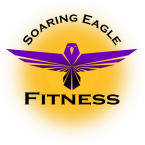

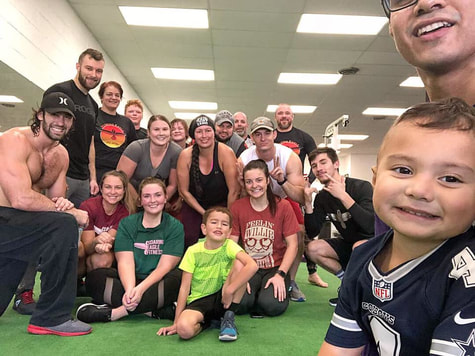
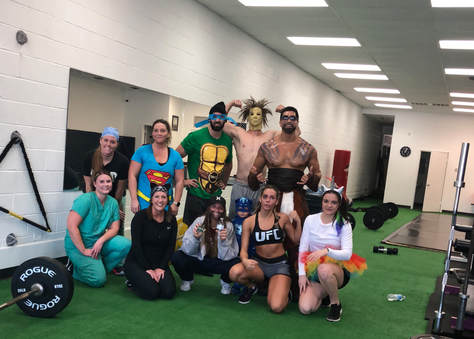
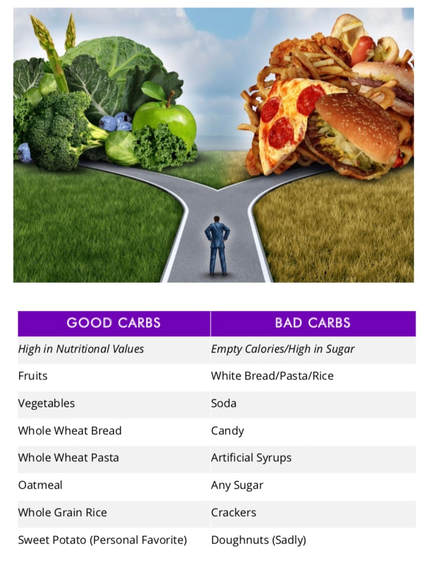
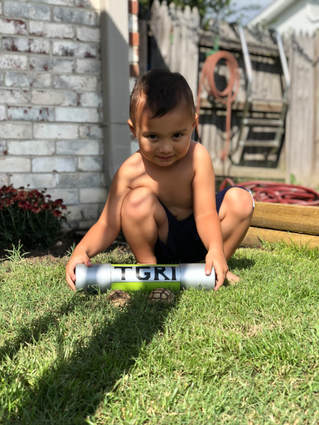



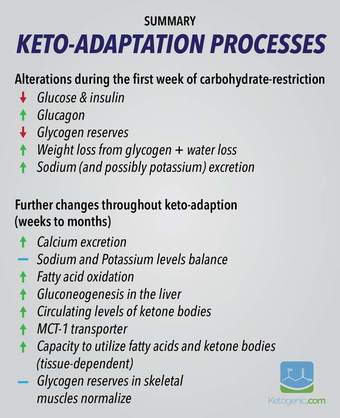
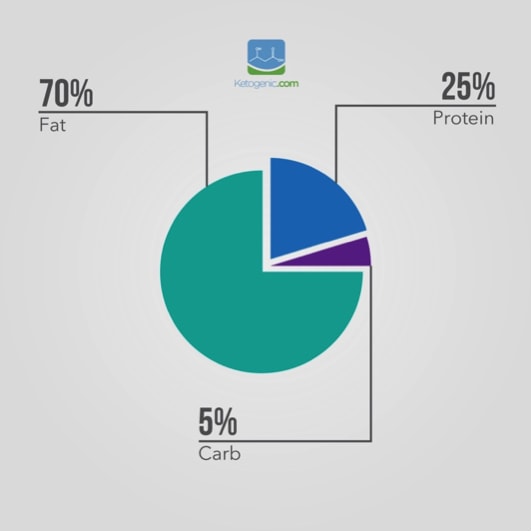
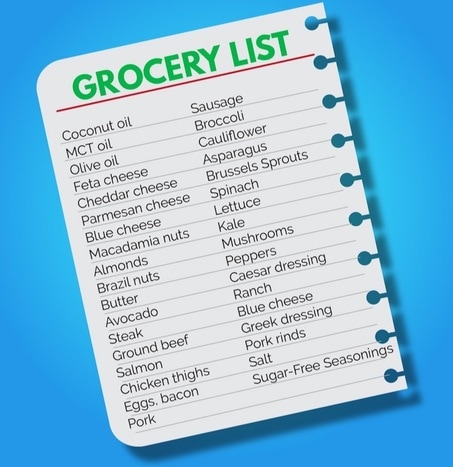

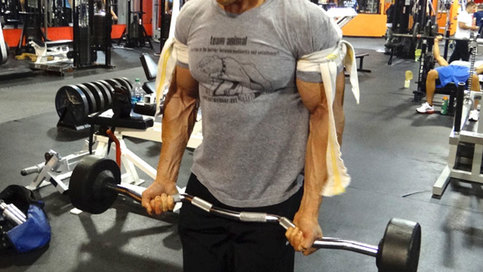



 RSS Feed
RSS Feed